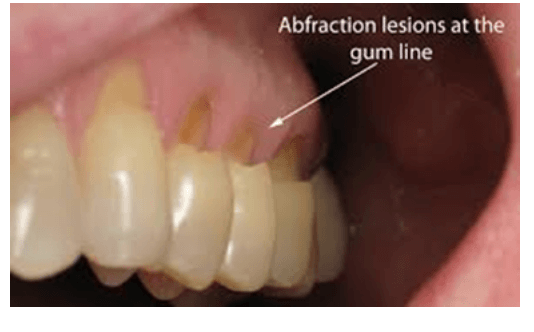Decay and Abfractions
Back to: Clinical Team Procedures
Philosophies About Decay
There are 2 classifications of decay. Incipient, which is defined as interproximal decay that is still within enamel, and dentin decay (decay past he DEJ) which is decay that needs to be addressed. Dentinal decay is considered urgent treatment.
We would classify incipient as preventative and anything further as very important treatment.
How much does it bother both you and the patient to treatment plan a B or L on a tooth, only to look up at the patient’s electronic chart and see that an O, or MOD was just done on the same tooth 1 year ago? Now the patient has to go through the emotional stress, get shots again, etc. Not to mention insurance likely will not cover if it has been within 24 months. Wouldn’t it have been better to just have been thorough and cleaned out those grooves while the patient was already numb and getting treated for that tooth last year? When treatment planning fillings for decay, remember how unfortunate it is for a patient to have MO placed on a tooth, then a B is added to the same tooth next year, and then L the following year. By treatment planning the MOBL from the beginning, if you think the other grooves will need to be filled in next couple years, it is better service to the patient to get done in 1 appointment. Additionally, insurance will typically only allow a tooth to be worked on once every couple years. So if you didn’t take care of everything at the first appointment, then they will likely deny the procedure at future appointments.
If you began treating the tooth and realize, the cavity will be less than originally thought, great! Patients love it when they get money back, and it makes them trust you more. This is part of our “Worse Case Scenario” treatment planning philosophy.
Another example: small occlusal filling on lower molars that only extends half way through the occlusal grooves, then leaks at each of the 4 groove points within 3 years… not good for the patient, not good for the dental office. If those grooves had been completely cleaned out, often times through lingual and buccal line angles slightly, this tooth may not need treatment again for 20 years. Sometimes we think we are being conservative and we are actually doing more harm.
Note: Check the lingual of maxillary anteriors. These teeth often have decay that goes undiagnosed
The only time an older restoration that was not placed in our dental office should not be 100% removed is if the dentist has agreed to perform compromised care for the patient after the patient declined ideal care. An example of this would be a patient presenting for recall and recurrent decay way detected under the mesial of a large MOD filling on tooth #3. The dentist correctly treatment plans a build up and crown. For whatever reason the patient declines the optimal treatment recommendation and asked for this decay to be removed via a compromised/patch option. If the dentist agrees to perform this compromise, leaving the distal portion of the large existing MOD restoration makes sense. Make sure this is documented well in the chart notes
Based on these pictures, our philosophy is to treat grade 1 with prevention and to treat grade 2-5 with restorative dentistry


The above xrays are a great example of what cavity can do over 12 months if the patient chooses not to follow our recommendations. The first xray shows incipient cavity at 13 mesial. We would typically not recommended restoring this because the caries is still in enamel. We had encouraged this patient to floss daily, lower his sugar intake and use daily fluoride. If these recommendations are followed, the caries should not grow and even can remineralize.
The second xray shows the lesion 12 months later. The caries is now into the dentin. We would have to assume our recommendations were not followed. At this point we need to restore the lesion.
CONDITION: Abfractions
Abfractions formation is multifactorial. A combination of excessive occlusal forces, acid exposure, and periodontal attachment loss.
Abfractions can be classified many different ways. Some abfractions have caries, some due not. Some abfractions are very sensitive, some are not.
We should consider treating abfractions in the following manner. If caries are present, it needs to be addressed. This would be considered VERY IMPORTANT treatment. If no cavity is present there are a number of treatment options that the patient and the provider should consider.
If the abfractions are asymptomatic we should consider the following treatment protocols, nutrition counseling to educate the pt regarding acid reflux, in office and at home fluoride treatments to seal and protect the exposed dentin and cementum and in many cases Invisalign to correct their bite and properly redistribute the forced. If they will not correct the issue, we can at least protect the teeth more by having a night guard made.
If the abfractions are a cosmetic concern to the patient then class 5 bonding or gingival grafting should be discussed
If the Class V is non symptomatic but is a cosmetic concern for the patient, the treating provider may decide to restore the area.




